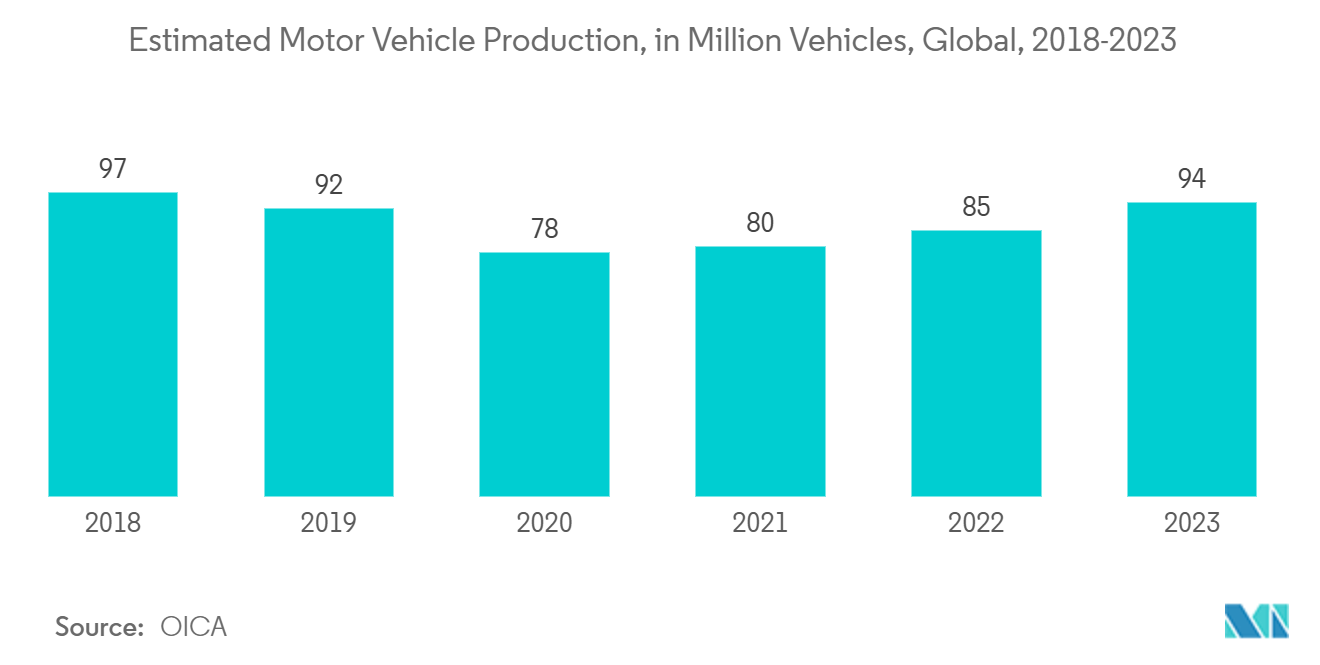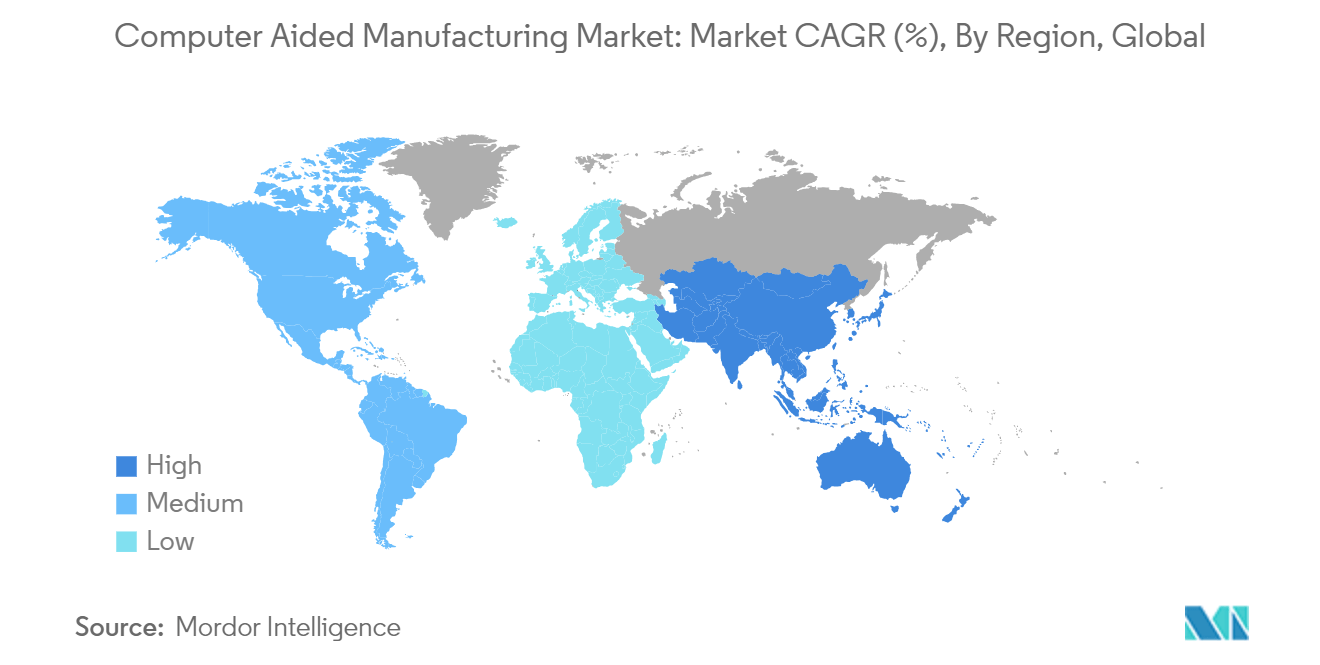Market Trends of Computer Aided Manufacturing Industry
Automotive Segment to Witness Major Growth
- One of the primary applications of CAM in the automotive industry is in the design and prototyping phase. Advanced software tools enable engineers and designers to create intricate 3D models of automotive components and systems. This capability significantly reduces the time and cost associated with traditional prototyping methods.
- By utilizing CAM, manufacturers can simulate performance, assess manufacturability, and identify potential design flaws before physical production begins. Rapid prototyping technologies, such as 3D printing, further enhance this process, allowing for the quick iteration of designs.
- CAM systems facilitate effective production planning and scheduling by analyzing production capacities, lead times, and resource allocation. By integrating CAM with Enterprise Resource Planning (ERP) systems, automotive manufacturers can optimize their production schedules to meet demand fluctuations while minimizing downtime. This level of optimization is critical in a sector characterized by just-in-time (JIT) manufacturing practices, where timely delivery is essential to maintaining competitiveness.
- Further, the automotive sector demands high precision in manufacturing components, such as engine parts, transmission systems, and chassis. CAM software enables the precise control of CNC (Computer Numerical Control) machines, which are integral to the machining process. These machines can execute complex geometries accurately, ensuring that components adhere to stringent quality standards. Additionally, CAM allows for the automation of machining processes, reducing the likelihood of human error and enhancing overall productivity.
- The growth in the demand for electric vehicles is also likely to aid the development of the studied market significantly. For instance, according to the International Energy Agency (IEA), almost 14 million new electric cars were registered globally in 2023, bringing their total number on the roads to 40 million.
- Electric car sales in 2023 were 3.5 million higher than in 2022, a 35% year-on-year increase. Electric cars accounted for around 18% of all cars sold in 2023, up from 14% in 2022. Further, the International Energy Agency (IEA) projected that electric vehicle (EV) sales will make up approximately 65% of total car sales by 2030 in the Net Zero Scenario. To achieve this, there should be an annual growth rate of around 25% in EV sales from 2023 to 2030.

Asia Pacific to Witness Major Growth
- China's pivotal role in the global manufacturing supply chain, coupled with a wave of digital transformation, has been the primary catalyst for the country's burgeoning computer-aided manufacturing sector. Over the past year, geopolitics have increasingly influenced global supply chains. While developed nations are reshoring their manufacturing bases, regions such as Mexico and Southeast Asia are gaining prominence. This dynamic has heightened competition among nations vying for manufacturing lines.
- Japan's manufacturing landscape has historically epitomized global innovation, efficiency, and resilience. With automotive giants like Toyota and electronic powerhouses such as Sony, Japanese companies have not only secured a competitive advantage but have also demonstrated remarkable longevity.
- Yet, today, Japanese manufacturing stands at a crucial juncture. The sector has grappled with notable supply chain disruptions over the last three years, primarily due to the COVID-19 pandemic and evolving US-China relations. In light of these challenges, companies are broadening their supplier networks to bolster reliability. With their renowned dependability and state-of-the-art technology, Japanese firms are strategically poised to leverage these industry shifts.
- South Korea's dynamic market is marked by a multitude of applications driving growth across its diverse sectors. Harnessing its cutting-edge technological framework and innovative spirit, South Korea has positioned itself as a leader in several industries. At the forefront of the nation's manufacturing landscape, the ICT and electronics sectors shine brightly, spearheaded by industry titans like Samsung Electronics Co., Ltd. and LG Electronics Inc. These conglomerates have adeptly broadened their manufacturing horizons beyond South Korea, with Samsung's two pivotal plants in Vietnam now constituting a third of its global production.
- As the demand for advanced, tech-driven automated machines surges, the manufacturing industry is witnessing a robust market upswing. This momentum is further amplified by the escalating appetite for electric vehicles and consumer electronics, underscoring the heightened need for sophisticated machine tools across diverse sectors. With the global manufacturing landscape expanding, the dependence on machine tools, such as Swiss-type automatic lathe machines, for final product production is deepening.
- Furthermore, as manufacturing methodologies advance, there's a pronounced demand for high-end machine tools that promise superior accuracy and precision. This evolution, in turn, amplifies the need for CAM software to adeptly operate these advanced tools.


